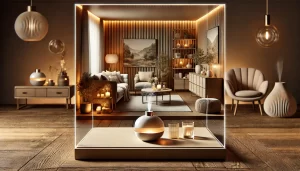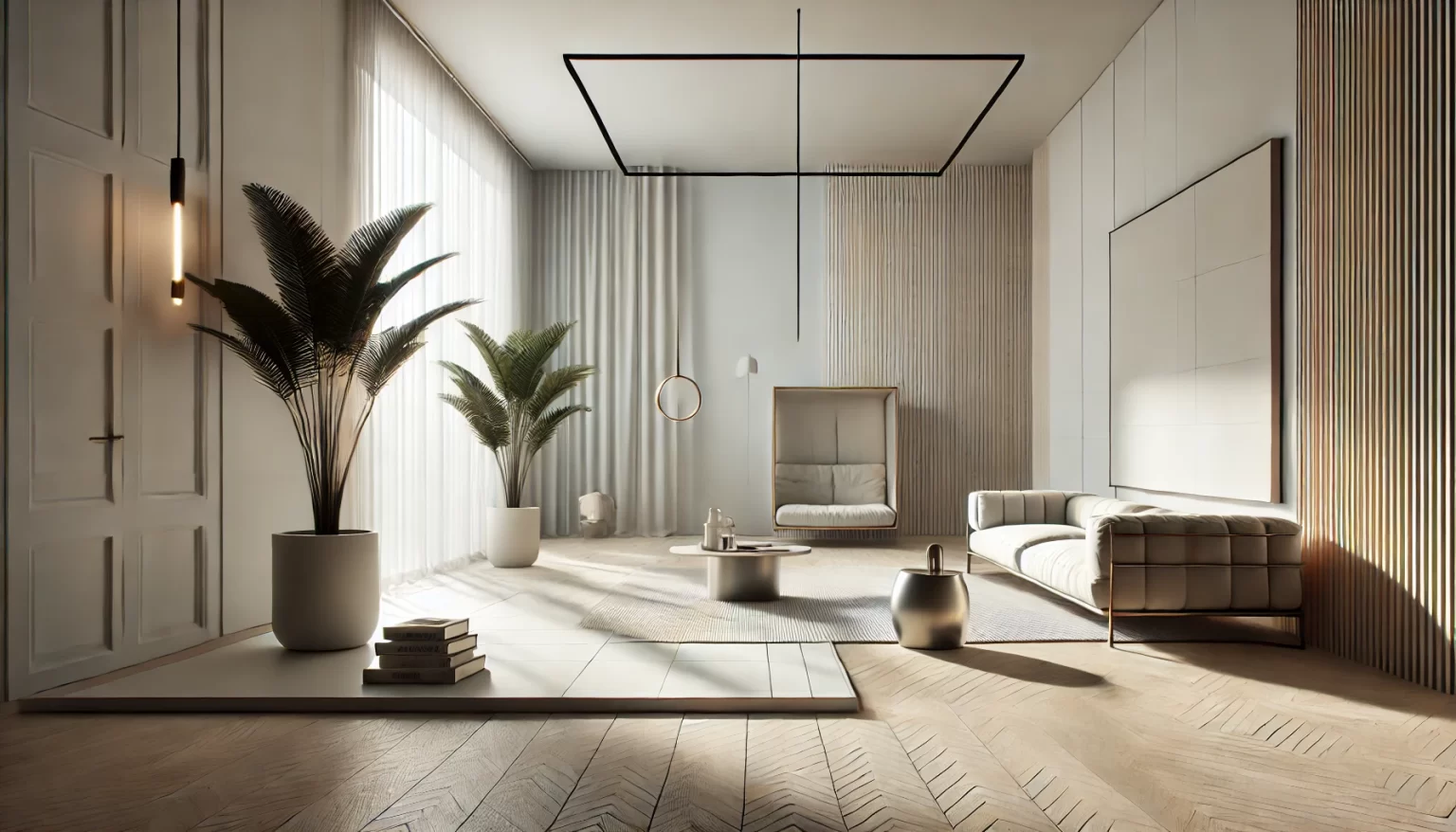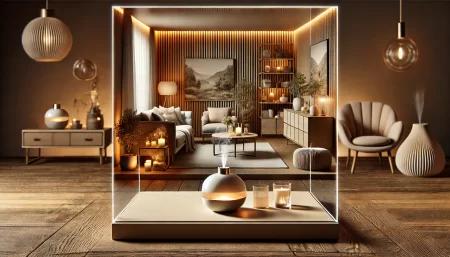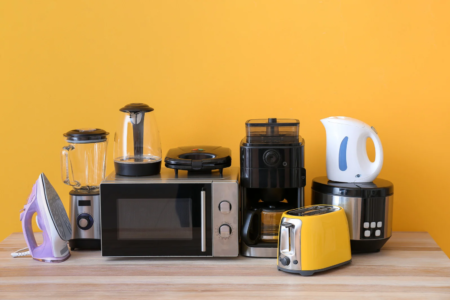Picture this, a tropical living room awash in soothing shades of millennial pink and teal. Clean lines meet bold patterns, and minimalist furniture coexists with eye-catching accessories. This is not a design contradiction but a perfect example of minimal maximalism, a hybrid style capturing the hearts of interior design enthusiasts worldwide.
Discovering one’s interior design style can be daunting. It requires familiarity with various design eras, shapes, materials, and colors. The world of interior design is replete with a complex glossary of terms that can leave even the most style-savvy individuals scratching their heads. Are you mid-century modern or Japanese? Shabby chic or farmhouse? Minimalist or maximalist?
If you find yourself torn between the allure of minimalism’s simplicity and maximalism’s exuberance, minimal maximalism might be the solution you’ve been searching for. This innovative design approach offers a refreshing middle ground, allowing you to embrace both worlds without compromising style or personality.
What Is Minimal Maximalism?
At its core, minimal maximalism is a design philosophy that seeks to balance two seemingly opposite aesthetics: minimalism and maximalism. To understand this hybrid style, let’s first break down its components.
Minimalism, often encapsulated by the phrase “less is more,” focuses on simplicity, functionality, and the elimination of excess. Clean lines, neutral color palettes, and a clutter-free environment characterize it. On the other hand, maximalism embraces the mantra “more is more,” celebrating abundance, bold colors, patterns, and eclectic combinations.
As the name suggests, minimal maximalism attempts to find the sweet spot between these two extremes. It combines minimalism’s clean lines and functionality with maximalism’s bold colors and patterns. The result is a style that’s both visually striking and practically livable.
One key characteristic of minimalism is its ability to incorporate statement furniture within a simplistic color palette. This approach allows standout pieces to truly shine without overwhelming the space. Additionally, the style often uses textiles and accessories to introduce bold patterns and colors while keeping larger furniture items relatively neutral.
What makes minimalism particularly appealing is its flexibility and potential for personalization. There’s no one-size-fits-all approach to this style. Instead, it encourages individuals to find the best formula for their space and personal taste. Some might lean towards the minimalist side with just a few maximalist touches, while others might opt for a bolder approach with more maximalist elements.
Key Elements of Minimal Maximalism
To truly understand and implement minimal maximalism in your own space, it’s essential to familiarize yourself with its key elements:
- Furniture: In minimal maximalism, furniture pieces often feature clean lines and serve functional purposes, aligning with minimalist principles. However, the style also incorporates statement pieces that add character to the space. These could be a uniquely shaped armchair, an ornate coffee table, or a boldly colored sofa.
- Color Palette: The color scheme in minimal maximalism is a delicate balance. While larger furniture items and walls often stick to a simplistic color palette (think whites, grays, and neutrals), bold colors and patterns are introduced through textiles and accessories. This approach allows for visual interest without overwhelming the space.
- Textiles and Accessories: Textiles play a crucial role in minimal maximalism. They’re the primary means of introducing bold patterns and colors into the space. Throw pillows, rugs, and curtains are excellent ways to add texture and visual intrigue while maintaining the room’s overall balance.
- Artwork and Decor: Minimal maximalism encourages the infusion of personality through carefully chosen wall art and decorative items. These pieces can be bold and eye-catching, serving as focal points in an otherwise minimalist space.
How to Decorate in Minimal Maximalist Style
Embracing minimal maximalism in your home doesn’t have to be daunting. Here’s a step-by-step guide to help you achieve this balanced look:
- Start with an Assessment: Take stock of your existing furniture and decor. Identify whether your current pieces lean more towards minimalism or maximalism. This will help you determine which elements to add or subtract to achieve the minimal maximalist balance.
- Building on Minimalist Pieces: If your space is minimalist, you can gradually introduce maximalist elements. Consider adding a patterned or brightly colored rug to anchor the room. Introduce interesting textures with throw pillows and curtains. Use wall art and decor to infuse personality and create focal points.
- Refining Maximalist Spaces: If your current style leans more towards maximalism, you can refine it by harmonizing it with a more monochromatic color palette. Balance bold pieces with simplistic accent items like side tables or lamps. Remember, the goal is to create a curated look rather than a cluttered one.
- Focus on Balance: The key to successful minimal maximalism is balance. For every bold element you introduce, consider adding a minimalist counterpart. For instance, if you have a vibrantly patterned armchair, balance it with a sleek, neutral-colored side table.
- Curate Your Collections: If you’re a collector, minimal maximalism allows you to display your treasures without creating clutter. Group similar items together and give them breathing space. This creates interesting focal points while maintaining a sense of order.
- Play with Contrast: Minimal maximalism thrives on contrast. Pair smooth textures with rough ones, geometric patterns with organic shapes, and light colors with dark ones. This interplay of contrasts adds depth and interest to your space.
Practical Tips and Ideas
As you embark on your minimal maximalist journey, keep these practical tips in mind:
- Start Small: If you’re new to this style, introduce small elements of contrast. A boldly patterned throw pillow on a neutral sofa or a colorful piece of art on a white wall can be a great starting point.
- Use Color Strategically: While minimal maximalism embraces bold colors, it’s important to use them strategically. Consider using the 60-30-10 rule: 60% of the room should be a dominant color (often a neutral), 30% a secondary color, and 10% an accent color.
- Embrace Negative Space: Don’t feel the need to fill every corner. Negative space is crucial in minimal maximalism, allowing statement pieces to stand out.
- Quality Over Quantity: Choose fewer, high-quality pieces rather than filling your space with many lower-quality items. This aligns with both minimalist and maximalist principles.
- Personalize Your Space: Minimal maximalism is all about expressing your personality. Don’t be afraid to incorporate items that hold personal meaning, even if they don’t perfectly fit the “rules” of the style.
For further inspiration, look to designers who excel in minimal maximalism. Kelly Wearstler, for instance, is known for her ability to blend minimalist architecture with maximalist decor. Jonathan Adler’s work often features clean-lined furniture adorned with bold patterns and accessories.
Final Thoughts
Minimal maximalism offers a refreshing approach to interior design. It allows individuals to enjoy the best of both minimalist and maximalist styles. This style celebrates personal expression while maintaining a sense of order and purpose.
Remember, there’s no strict formula for minimal maximalism. The beauty of this style lies in its flexibility and potential for personalization. Whether you lean more towards minimalism with just a few bold accents or prefer a more maximalist approach with carefully curated elements, the key is to create a space that feels authentically you.
As you explore minimal maximalism, don’t be afraid to experiment. Add elements, remove them, and adjust until you find the perfect balance for your space. After all, the ultimate goal of any interior design style is to create a home that looks beautiful and feels just right for you.








